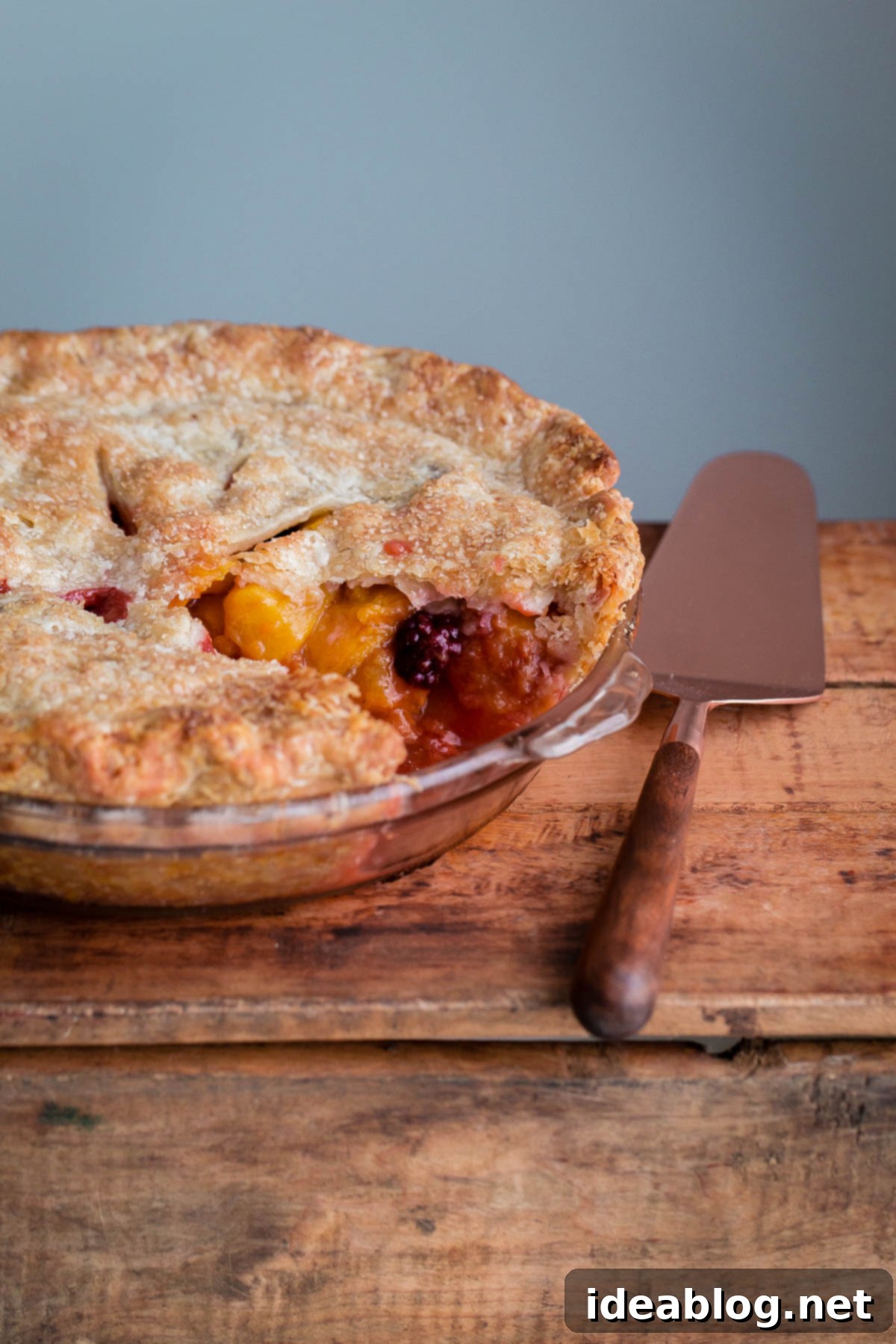Homemade Blackberry Peach Pie: Your Guide to a Flaky, Flavorful Summer Dessert
There’s something truly magical about a homemade pie, especially one that celebrates the vibrant flavors of summer. This exquisite Blackberry Peach Pie is a testament to that magic, brimming with succulent fresh peaches and the perfect counterpoint of tart blackberries, all encased in a buttery, flaky crust. Imagine serving this warm, perhaps with a generous scoop of creamy vanilla ice cream, and witnessing the sheer delight on everyone’s faces. It’s more than just a dessert; it’s an experience, a quintessential summer treat that brings joy to any occasion.
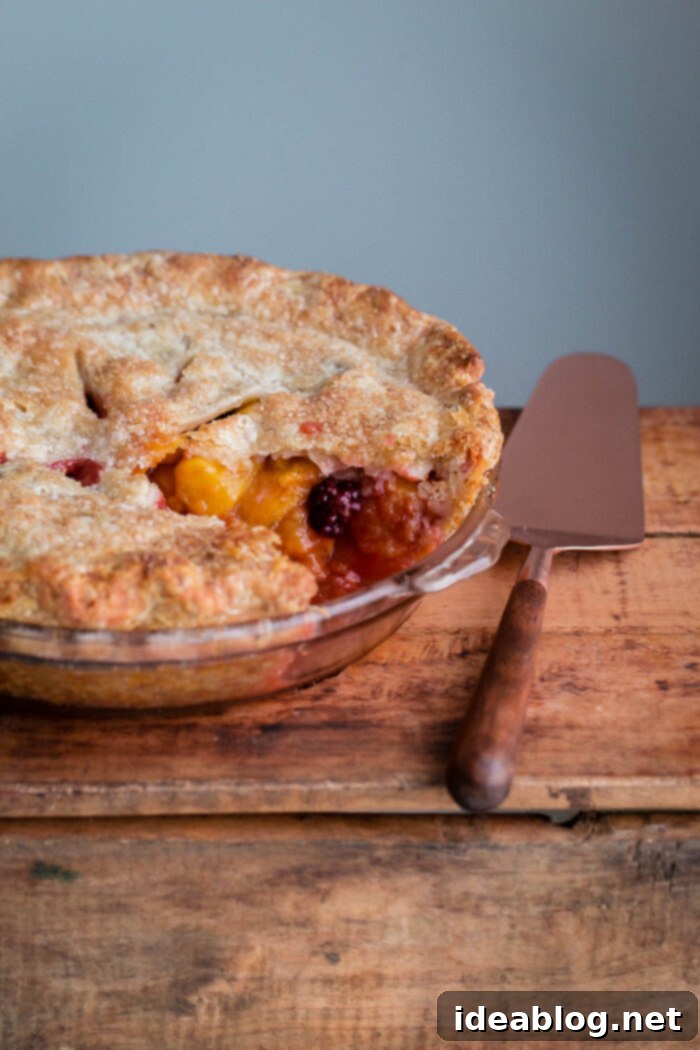
For many, the thought of making a homemade pie can be daunting, particularly when it comes to crafting the perfect pie crust from scratch. However, if there was ever a time to shed that fear and embrace the rewarding process of baking, it’s now. The journey to a perfectly golden, flaky, and fruit-filled pie might seem challenging, but the effort invested is repaid tenfold with every delicious bite. This summer pie truly stands out as one of the best desserts to emerge from my kitchen all year, proving that homemade always tastes superior. While I confess a particular fondness for peach pie, any homemade pie promises a delightful experience.
The secret to this pie’s exceptional flavor lies in the harmonious pairing of two beloved summer fruits. While a classic peach pie is undeniably wonderful, the addition of fresh, juicy blackberries introduces a welcome touch of tartness in each bite. This subtle tang cuts through the sweetness of the peaches, creating a perfectly balanced flavor profile that elevates the pie from merely good to absolutely unforgettable. It’s a combination that truly improves the dessert for the better, making it a staple for your summer baking repertoire.
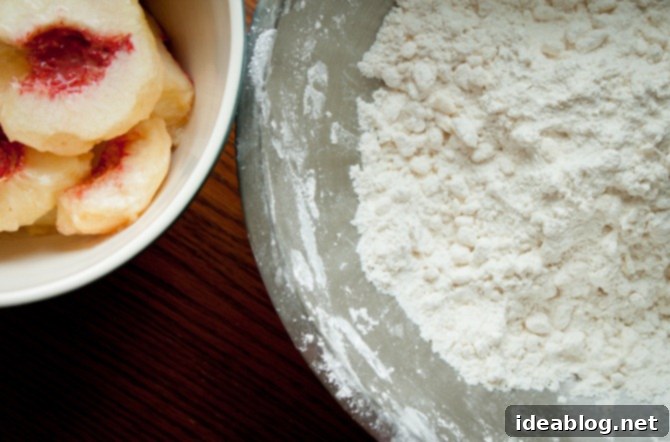
Mastering the Homemade Pie Crust: A Foundation for Flaky Perfection
Crafting a truly spectacular pie starts with its foundation: the crust. Many shy away from homemade pie crust, intimidated by tales of tough dough or crumbly disasters. However, with a few key principles and a bit of practice, you can achieve a perfectly flaky, tender crust every single time. This recipe is a slight variation and an improvement upon a blackberry peach slab pie I shared almost five years ago, building on lessons learned and techniques refined over countless baking sessions. As is the case with most endeavors in life, especially in baking, practice, discipline, and a basic understanding of the core principles are crucial for achieving great results. For an even deeper dive into crust perfection, I highly recommend revisiting these tips for fool-proof pie dough.
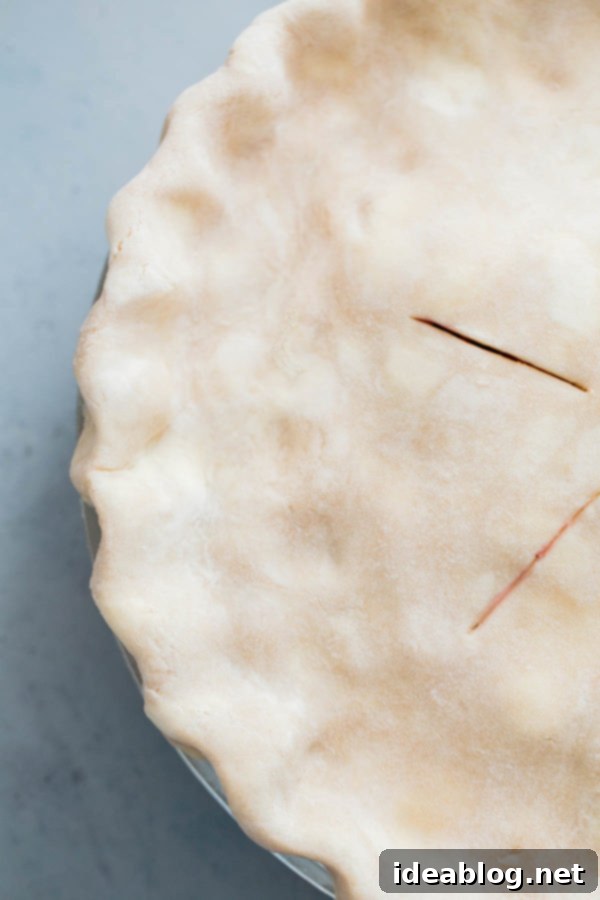
The Golden Rule of Pie Dough: Temperature Control
The single most important factor to keep in mind when embarking on your homemade pie journey is **temperature**. This cannot be stressed enough. It is of the utmost importance that all of your ingredients, tools, and even your kitchen environment (if possible!) be as cold as possible before you even begin preparing your pie dough. Heat, in this context, is truly your worst enemy. Warm ingredients, especially butter, lead to gluten development, resulting in a tough crust, and prevent the formation of those coveted flaky layers.
Cold butter, in particular, plays a critical role. When incorporated into the flour in large and small pieces, it helps to discourage excessive gluten formation during mixing. More importantly, it is essential that these butter pieces remain chilled throughout the dough-making process and in the final shaped pie as it hits the hot oven. As the cold butter encounters the high heat of the oven, the water within it rapidly turns to steam, creating air pockets and separating the layers of dough. This process is precisely what enables it to produce that signature flaky texture we all adore. If the butter melts before baking, you’ll end up with a dense, bready crust rather than a light, airy one.
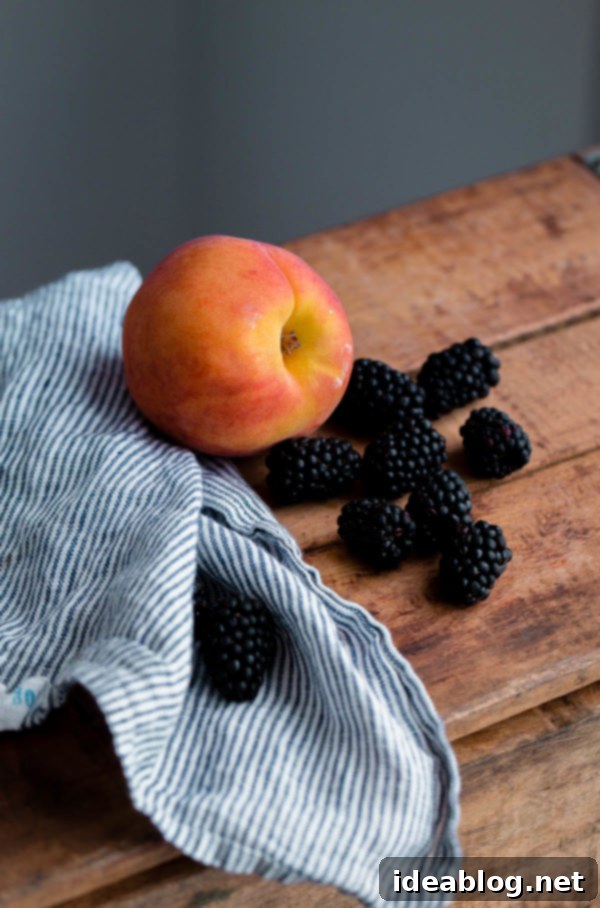
Mixing Methods for Your Flaky Pie Crust
Over the years, I’ve experimented with and prepared pie dough using every method imaginable. From the traditional by hand approach using a pastry cutter, which offers a tactile connection to your dough, to the speed and efficiency of a food processor, and most recently, discovering the precision of a stand mixer with a paddle attachment. Each method has its merits, but the stand mixer technique, which I learned at the suggestion of Samin Nosrat in her excellent cookbook Salt, Fat, Acid, Heat, has become my preferred choice for its consistent results and ease of handling. Whichever method you choose, the goal remains the same: to quickly combine the ingredients while keeping the butter as cold as possible.
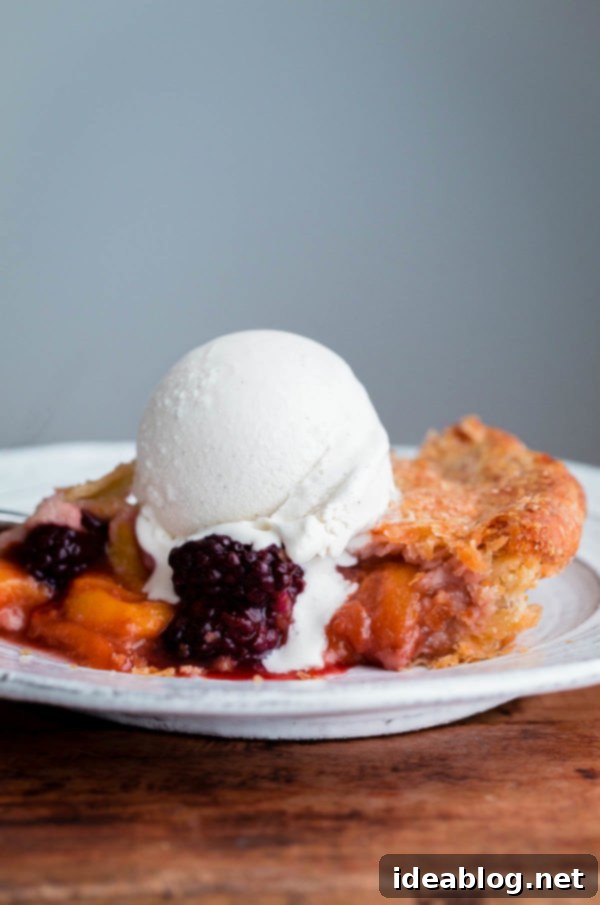
Crafting the Perfect Peach Blackberry Filling
The heart of this summer dessert is its vibrant, sweet-tart filling. The combination for this blackberry peach pie filling features perfectly ripe, peeled yellow (or white) peaches, which provide a lush sweetness and soft texture, alongside fresh blackberries, whose bright tartness offers a delightful contrast. These fruits are gently tossed with a blend of lemon juice, which enhances their natural flavors and prevents oxidation; brown sugar and granulated sugar, providing balanced sweetness; a touch of warming cinnamon and nutmeg for aromatic depth; and a crucial ingredient, cornstarch. While I’m not typically a huge fan of cornstarch in all applications, it plays an incredibly important, almost indispensable, role in this pie: thickening the filling just enough to prevent excessive weeping and ensuring a beautifully set slice without being gummy. The best part? Its flavor is absolutely undetectable once baked, I promise.
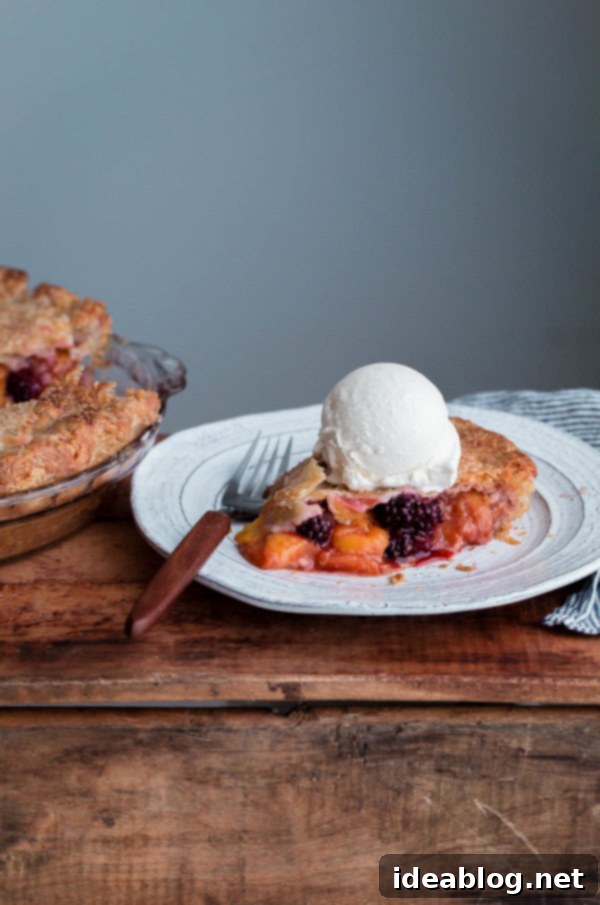
When selecting your peaches, aim for those that are ripe but still firm. This ensures they hold their shape somewhat during baking and don’t turn to mush. Peeling the peaches, though a bit of extra work, yields a superior texture in the finished pie. Blanching them briefly in boiling water followed by an ice bath makes the skin incredibly easy to slip off. As for the blackberries, fresh is always best to capture that pure, vibrant tartness. If fresh aren’t available, frozen can work in a pinch, but ensure they are not too watery and adjust cornstarch if needed.
The blend of spices—cinnamon and nutmeg—isn’t overwhelming; rather, it’s designed to complement the fruit, adding a hint of warmth that makes the pie feel comforting and balanced. The lemon juice not only brightens the fruit flavors but also helps the cornstarch activate more effectively, contributing to that perfectly set filling. This thoughtful combination of ingredients ensures that every forkful of your homemade blackberry peach pie is a delightful symphony of summer flavors and textures.
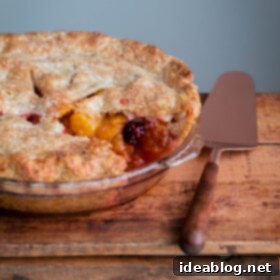
Blackberry Peach Pie
Pin
Review
SaveSaved!
Ingredients
Double Crust Pie Dough:
- 2¼ cups (300g) unbleached all-purpose flour fluffed, scooped, and leveled
- 1 tablespoon (12g) granulated sugar
- large pinch kosher salt
- 8 ounces (230g) cold unsalted butter cut into ½-inch cubes
- 1 teaspoon white vinegar or fresh lemon juice
- ½ cup (120 mL) ice water less or more as needed
Peach Blackberry Filling:
- 3 lbs fresh peaches (ripe, but firm) roughly 6-7 large peaches
- 8 ounces (1½ cups) fresh blackberries
- ¼ cup (50g) lightly packed light or dark brown sugar
- 3 tablespoons (36g) granulated sugar
- 3 tablespoons cornstarch
- 1 tablespoon fresh lemon juice
- 1 teaspoon ground cinnamon
- large pinch ground nutmeg
- ⅛ teaspoon kosher salt
Assembly:
- 1-2 tablespoons heavy cream for brushing
- white sparkling sugar optional
For Serving:
- vanilla ice cream or whipped cream
Instructions
-
Prepare the Pie Dough (Morning Before Serving or Prepped the Day Before): Combine the all-purpose flour, sugar, and salt in the bowl of a stand mixer. Note: If you do not own a stand mixer, you can prepare the dough in a large food processor or by hand using a pastry cutter.
-
Using the paddle attachment, mix the dry ingredients for 5 to 10 seconds over low speed. Over low speed, slowly add the cold cubed unsalted butter, a few pieces at a time, until the butter has broken into a mixture of larger and smaller size pieces (similar to ‘broken walnut pieces’). Add the vinegar and slowly add the ice water (you will most likely need to use all of it or a touch more, but this will depend on humidity) until the dough just barely holds together. It will look relatively dry and shaggy in the bowl, but if the dough can hold together when squeezed with your palm, it is ready.
-
Transfer the pie to a large gallon-size Ziplock bag (this helps lessen the warmth from your hands from transferring to the dough) and using the open ends and sides of the bag, press the dough together into a ball using the heels of your hand.
-
Remove the pie dough from the bag and using a sharp knife, cut the dough into two equal-sized pieces. Flatten each piece into a round disc and wrap tightly in plastic wrap. Refrigerate for at least 2 hours or, ideally, overnight.
-
Blanch the Peaches, Shape Pie Dough, and Preheat the Oven: Preheat the oven to 425°F (220°C) with a rack in the center position. Line a half sheet pan with parchment paper or foil. Set aside.
-
Bring a large pot of water to a boil. Set aside a large ice bath near the stove. Using a paring knife, make a small shallow ‘X’ incision onto the bottom of each peach and carefully drop into the boiling water. Allow the peaches to blanch for roughly a minute (depending on the ripeness of your peaches) or until the skins begin to slightly peel away from the flesh. Using a skimmer or large spoon, transfer the peaches to the ice bath (this will prevent them from cooking any further) until cool enough to handle. Transfer to a paper towel-lined plate and set aside.
-
Meanwhile, remove one disc of chilled pie dough from the fridge. Allow it to sit at room temperature for 5 to 10 minutes. On a well-floured countertop and using a lightly floured rolling pin, roll the dough until it roughly a 12-inch disc that is roughly ⅛-inch thick. Lift and transfer to a 9-inch pie pan (equipment note: I recommend heavy ceramic) pressing it into the edges of the pan without stretching the dough. Using a knife or kitchen scissors, trim any remaining dough overhang to just one inch. Brush off any excess flour with a pastry brush and place the pie pan in the freezer for 10 minutes or cover tightly with plastic wrap and refrigerate for up to 30 minutes. Remove the remaining pie dough disc from the fridge, unwrap, and roll into a 12-inch diameter disc that is roughly ⅛-inch thick or less. Place the dough between two sheets of plastic wrap or parchment paper and chill in the fridge while you prepare the pie filling.
-
Prepare the Pie Filling: Using a pairing knife, carefully peel the skin from the blanched peaches, remove the pits, and cut into ½-inch thick wedges. Transfer the peach wedges to a large mixing bowl and add the blackberries, brown sugar, granulated sugar, cornstarch, lemon juice, cinnamon, nutmeg, and salt. Toss gently to combine.
-
Remove the pie pan from the freezer and add the peach blackberry filling. Remove the rolled top crust pie dough from the refrigerator and place over the fruit filling, tucking the overhang of the top crust over and then under the bottom crust overhang. Press and crimp the edges of the crust as desired.
-
Using a sharp paring knife, cut several 2-inch slashes into the top crust. Set the assembled pie in the freezer to chill for 20 minutes (or alternatively, cover with plastic wrap and refrigerate for up to 1 hour). This will allow the pie dough to relax, the butter to chill, and helps prevent shrinking during baking.
-
Bake: Brush the top crust with heavy cream and sprinkle with sparkling sugar and set the pan on top of the lined sheet pan. Bake for 15 minutes. Reduce the oven temperature to 400°F (205°C) and bake for an additional 15 to 20 minutes or until the pie crust is lightly golden. Reduce the heat to 350°F (175°C) and continue to bake until deeply golden brown, an additional 25 to 35 minute. The filling should be lightly bubbling. Transfer the pie to a wire rack and allow to cool for at least 2 to 3 hours before slicing. Serve slightly warm or at room temperature with vanilla ice cream or whipped cream.
Tips for Success:
- It is essential that your pie dough ingredients start/stay as chilled as possible! This ensures minimal gluten development (tenderness) and allows the butter to remain cold as it hits the hot oven (producing flaky layers). Butter that starts to melt or soften will produce a tougher crust with very little flakiness.
- A small addition of white vinegar (aka. acid) helps discourage additional gluten formation as well. If you do not have white vinegar on hand, you can substitute it with apple cider vinegar or freshly squeezed lemon juice for a similar effect. It is not an essential ingredient by any means, but doesn’t hurt!
Pie dough recipe and method adapted very lightly from Salt Fat Acid Heat by Samin Nostrat. Filling inspired by Smitten Kitchen.
